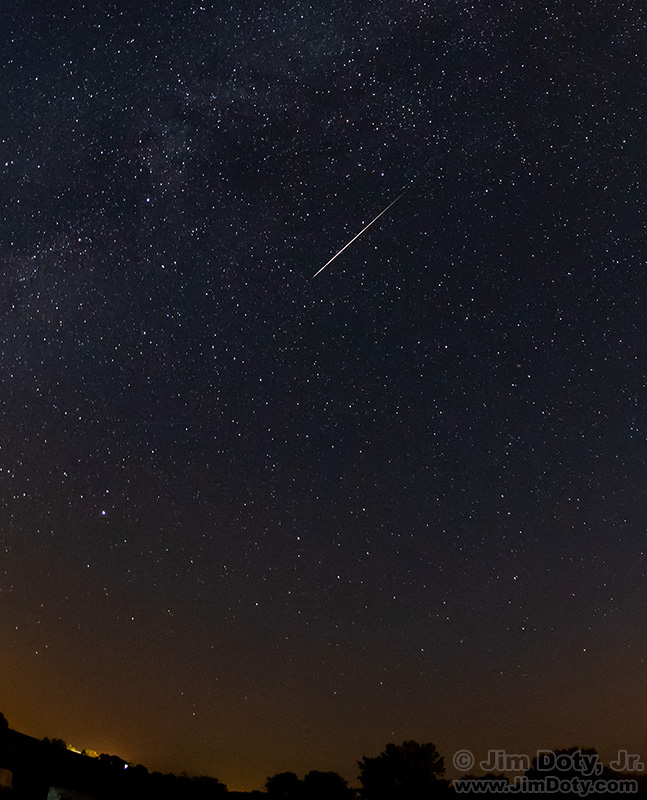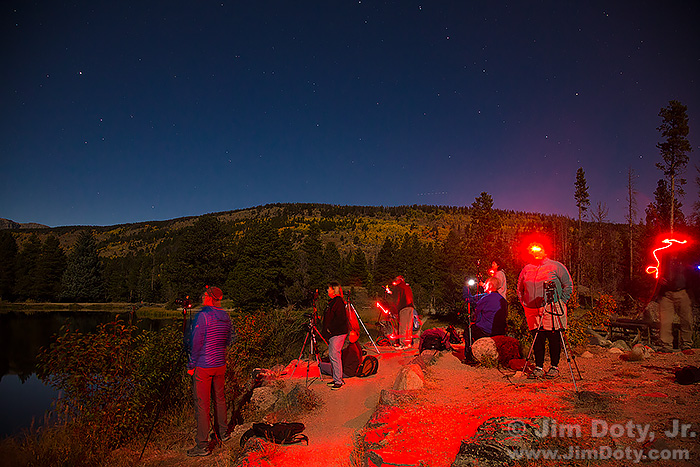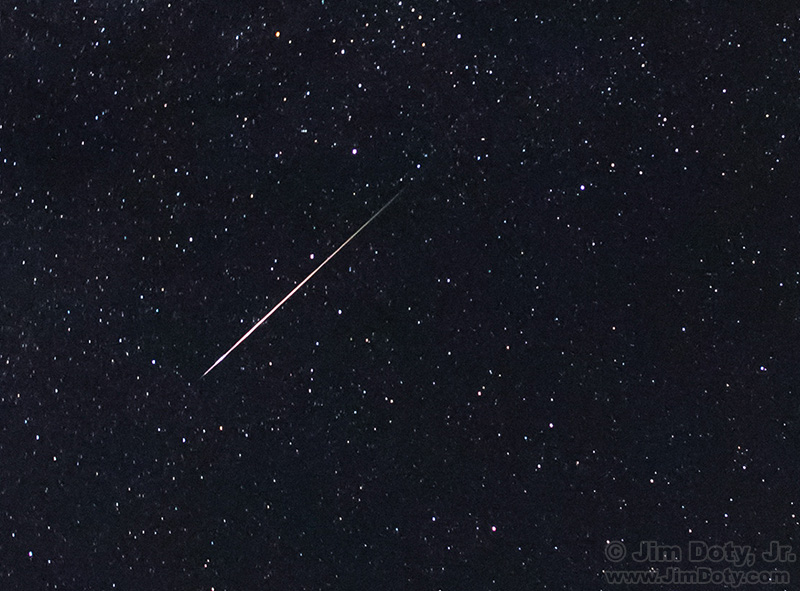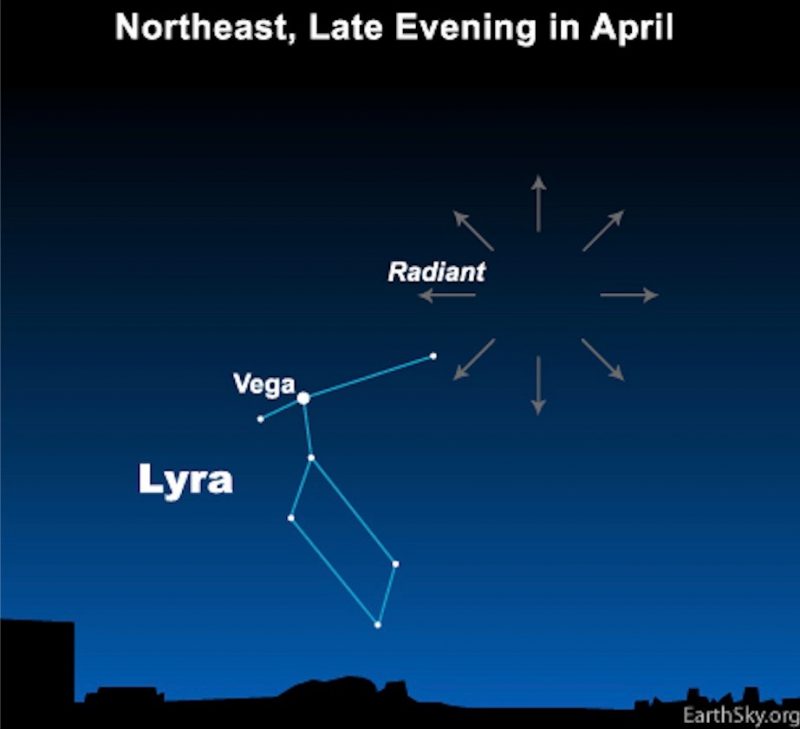
Perseid Meteor photographed from Rose Hill Cemetery west of Lamoni, Iowa. 4:55 am CDT, August 13, 2018.
This is the best week to see the Lyrid Meteor Shower. The peak is Tuesday night through early Wednesday, April 21-22, but you can see meteors through the 25th. This article will tell you what you need to know to see and photograph this popular spring meteor shower. Best of all, this will be a mostly dark sky week without much interference from the moon.
If you have clear skies tonight and and the weather tomorrow is at all iffy, by all means go out tonight. If you have never photographed meteors before, tonight would be a good practice night for tomorrow.
The Lyrids
Most meteor showers are named for the constellation that is their “radiant point”, the place in the night sky where they appear to originate. The Lyrids are named for the constellation Lyra.
To See The Meteors
Where to Go
Get as far away as you can from big city lights. If you end up near other photographers, keep a good 12-15 feet apart for coronavirus social distancing.
Red Lights for Dark Adaptation
It takes your eyes 20-30 minutes to dark adapt and see fully at night. People who do this a lot usually own a red headlamp, or use a flashlight with a red filter. White lights are a no no. Turn a white light on just for a moment and your dark adaptation starts all over again.
One night at Sprague Lake in Colorado about 15 photographers in several groups were doing night photography. Someone started around the lake with a white flashlight and all around the lake voices yelled out “Turn your flashlight off!”
Where to Look
See “Where to Look and Point Your Camera” in the photography section below.
When to Look
Go out any night between 10 pm and 4 am. Go out an hour earlier in the western United States. The number of meteors per hour will increase as you get closer to the predicted peak, and diminish the nights after the peak. So if it is cloudy tonight and tomorrow, try later in the week.
The peak of the shower with an estimated 10-20 meteors per hour will last last just a few hours. The predicted center of the peak in North America is Wednesday, April 22, around 2 am EDT, 1 am CDT and so on. So start looking Tuesday April 21 any time after 10 pm (9 pm in the western U.S.) and watch through the early hours of Wednesday morning.
To Photograph the Meteors
All of the above applies. Dark skies, be out between 10 pm and 4 am.
Basic Camera Settings
Put your camera on a tripod.
Use a wide angle lens to take in a wide area of sky.
Turn autofocus off. Manually focus the lens on infinity. That can be tricky for night photography. Read this article for help.
Start with these settings: ISO 3200. Aperture of f/4. Shutter set at 30 seconds.
Where To Look and Point Your Camera
The Lyrids appear to radiate from a point about 10 degrees from the bright star Vega in the constellation Lyra. This sky map is from EarthSky.org. See the link below.
Lyra rises above the northeast horizon around 9 pm local time and is almost directly overhead by 4 am, so your focus should be to the northeast and get progressively higher in the sky throughout the night.
If you have Stellarium for your computer (it is free, link below), or the Planets app for your smartphone (or a similar night sky app), or a planisphere, or star charts, figure out where Lyra is in the sky and point your camera about 10 degrees to the upper right of Vega. 10 degrees is about the width of your fist at arms length.
Take Some Test Shots
Take a few test pictures of the night sky to test your exposure settings. If the stars (or the sky background) are too bright, try ISO 1600 or lower (or cut the shutter speed from 30 to 15 seconds). If the stars are too dim, try ISO 6400 or higher.
Capturing Meteors
Once the meteors start appearing, start taking a lot of pictures.
Don’t wait to see a meteor before you open the shutter. Just take one picture right after another until you get something. It is a bit about luck and a lot about having the shutter open most of the time. Check your exposures periodically, stop and adjust the ISO if necessary, and then start taking pictures again, one after another.
A wide angle lens increases your odds of photographing a meteor. Although meteors appear to radiate from a specific area of the sky, they can show up just about anywhere in the sky. A wide angle lens does mean the streak of the meteor across the sky will look smaller, but you can always crop the original image, as I did for the image at the top of this article.
Photo Data: Canon 5D Mark III. Canon EF 15mm lens. f/4.5, 30 seconds, ISO 3200.
Links
Buying a Red Headlamp for Night Photography: The Essential Feature
How To Focus Your Lens on Infinity for Night Photography
How To Use a Planisphere – with additional information on Stellarium software for your computer and the Planets app for smartphones.
Lyrid meteor shower: All you need to know – at EarthSky.org
Lyrid MeteroShower 2020 Peaks This Week! Here’s what to Expect – at Space.com



